MusicRadar Verdict
The performance, usability and build quality here are extremely difficult to fault at this price point. In fact, we can’t! The FRFR 112-A is loud, proud and a great value investment.
Pros
- +
Great value for home or gigging.
- +
Solid and robust build.
- +
Huge headroom.
Cons
- -
1200 watts is more than most of us will ever need – a lower-powered version would be good.
MusicRadar's got your back
What is it?
Welcome to the brave new world in backline for guitarists – it’s not just a case of traditional combos or heads anymore. Digital modelling has stepped up considerably and it’s now a completely viable option beyond the home studio; companies need to accommodate the stage and practice room with more bespoke options for players to make the most of the effect, amp and cab modelling from the likes of Helix, Axe-Fx, Kemper and HeadRush offer. Enter stage left; the full-range, flat response Digital Signal processing cab.
Let’s take the brands’ lead and shorten that mouthful to FRFR DSP. It’s essentially a PA speaker with built-in poweramp designed for use with guitars – the digital signal processing coming from impulse response cab models that can be selected or turned off if you want to use your. Not all FRFR speakers designed for guitarists include the DSP features of cab models, and some even allow you to load your own IRs.
Harley Benton’s 1 x 12 FRFR-112A comes with three cab sims of its own and 1,200 watts of Class D power amp; that's a lot of potential headroom. It’s also worth noting that these kinds of active speaker offer potential beyond guitars due to their FRFR nature that can handle a wide range of frequencies and tones with a neutral output.
There’s no reason you can’t run an acoustic guitar, bass, keyboard or vocals through one with the electric cab sim turned off. Or run a valve-powered guitar preamp pedal through one if you want.
The price here raises our eyebrows in surprise and expectancy. In a growing market with brands including Line 6, HeadRush, Friedman and Laney it’s becoming increasingly competitive. But those names are established in their field of amplification and modelling compared to Harley Benton. So how does this debut perform?
Well, the only way to find out more is to get playing and testing our building’s foundations with some volume!
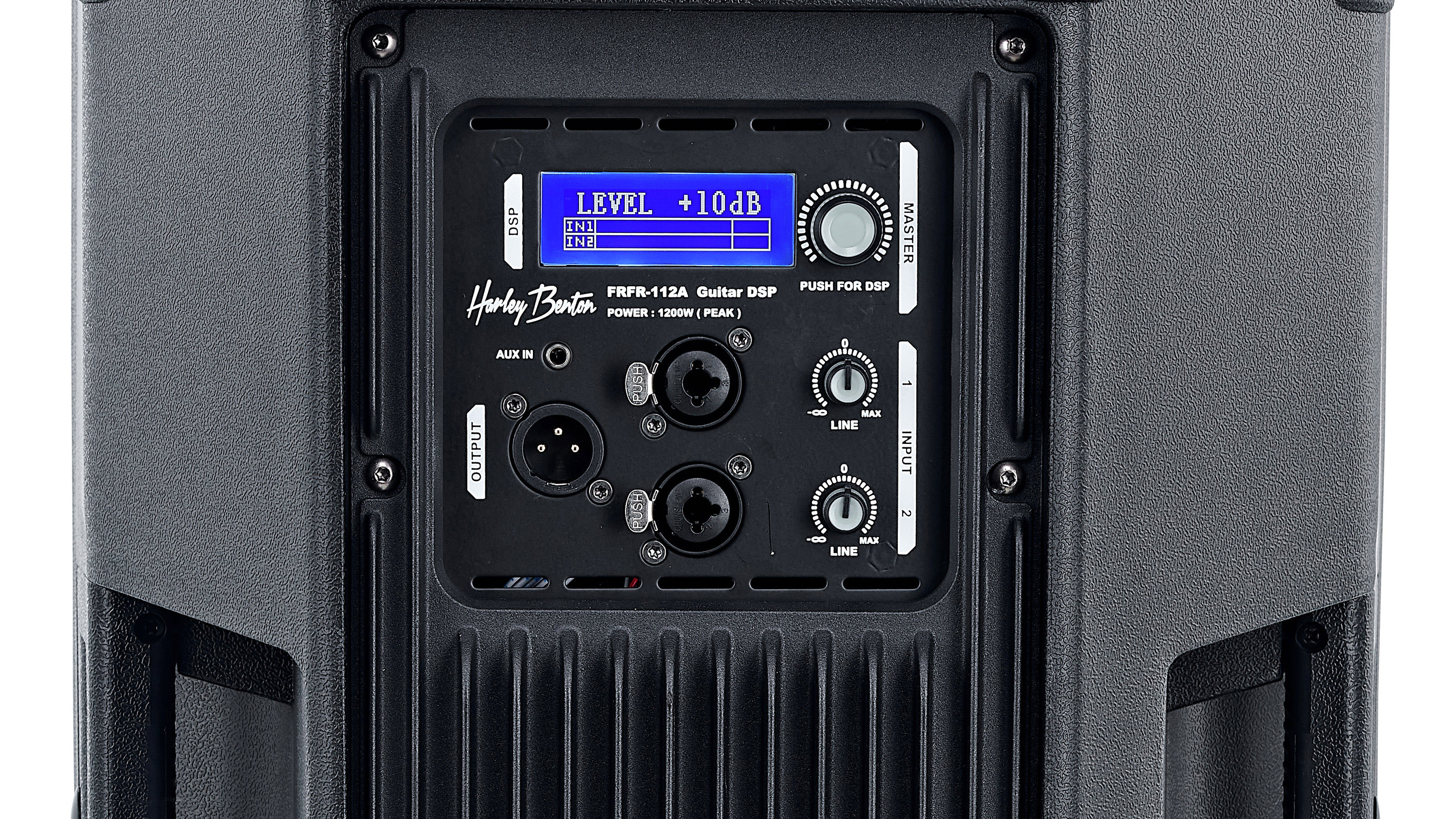
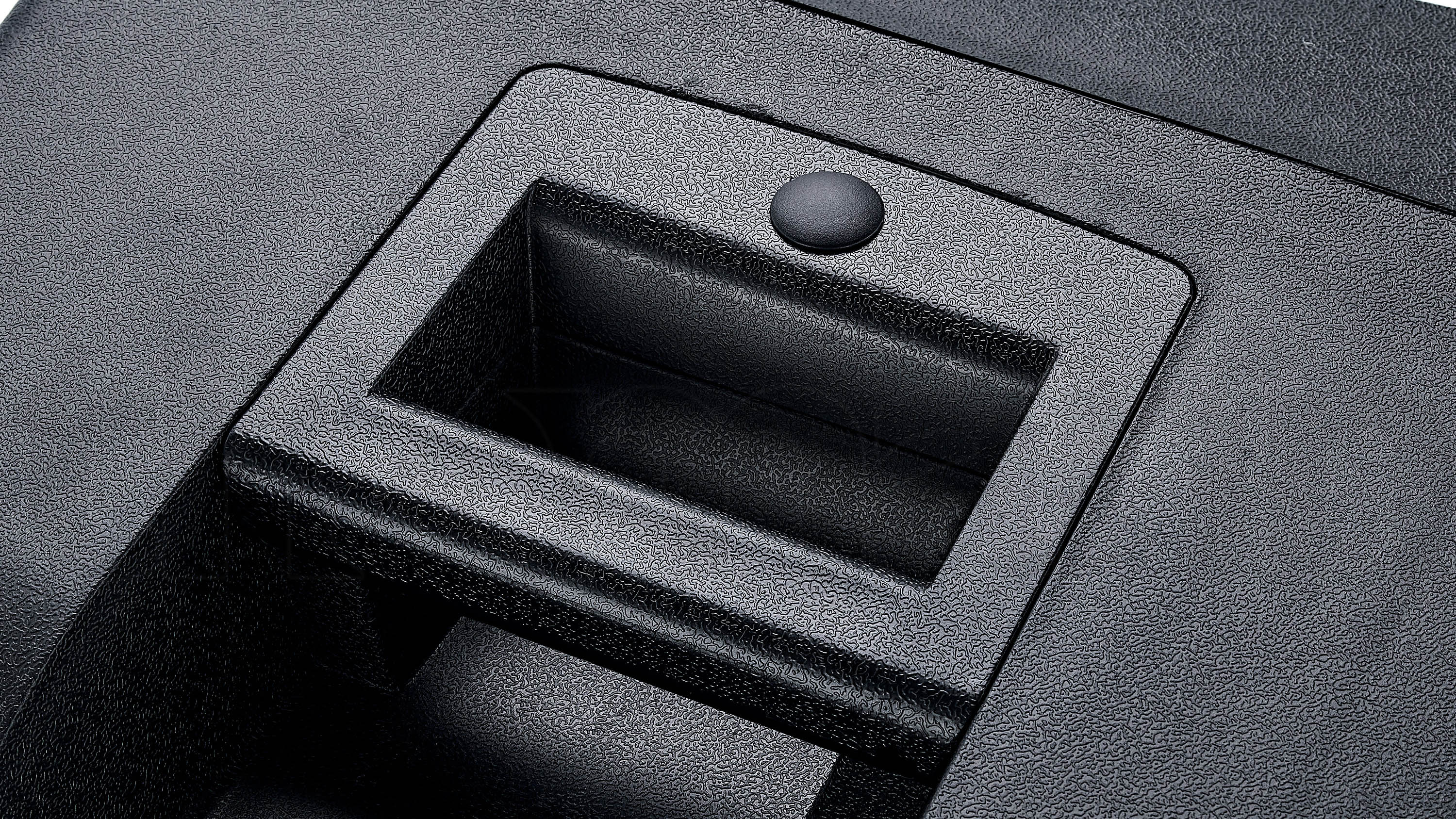
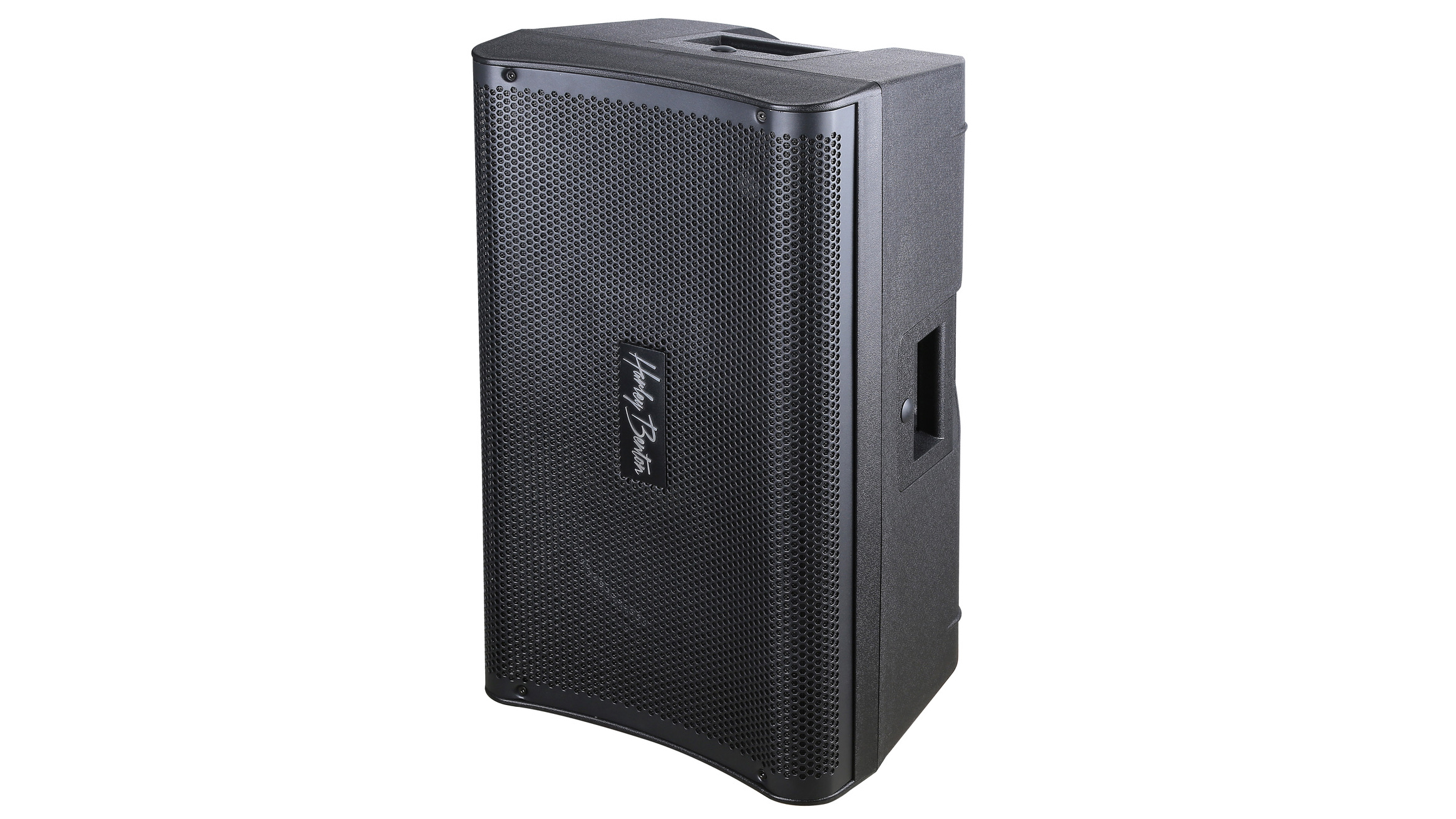
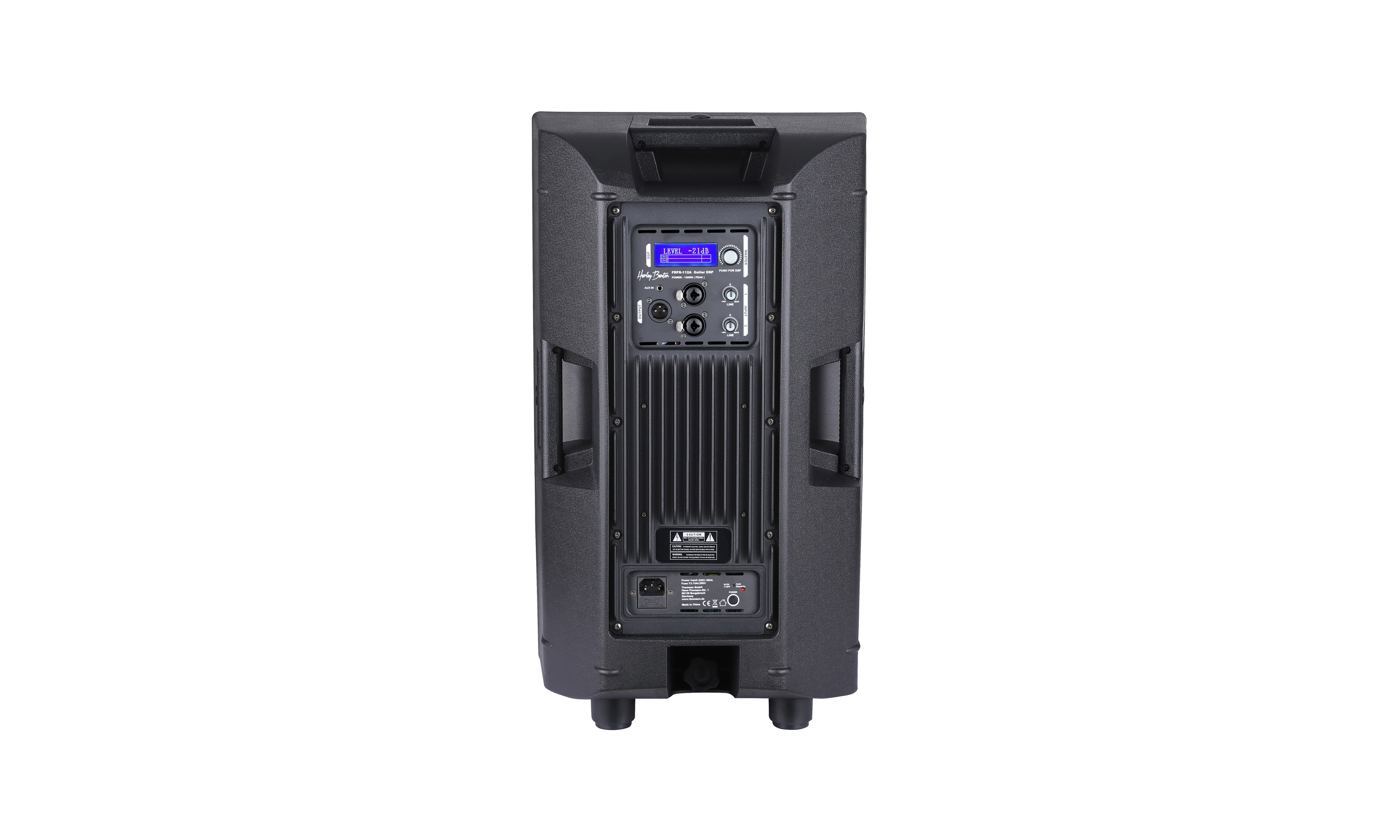
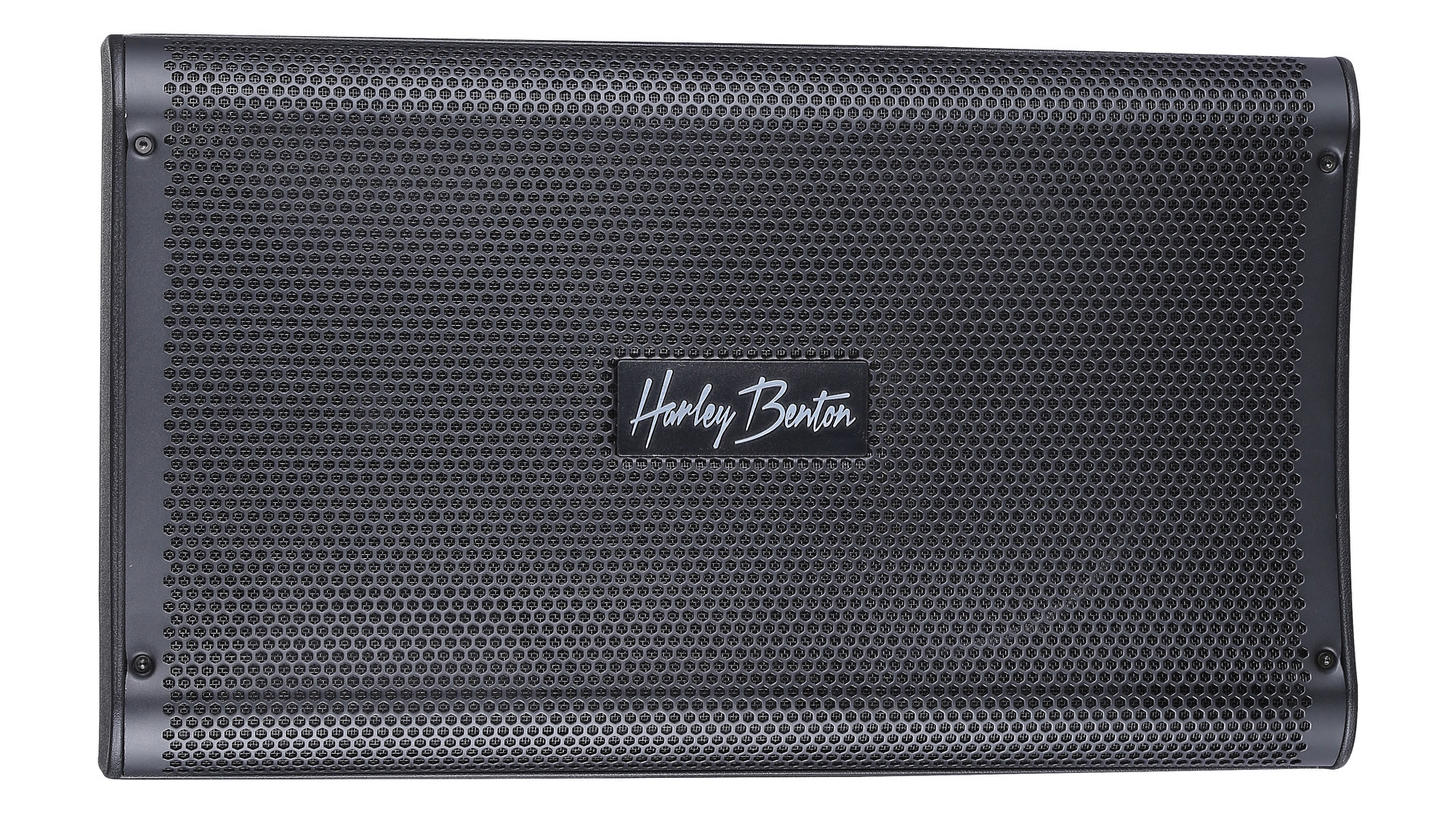
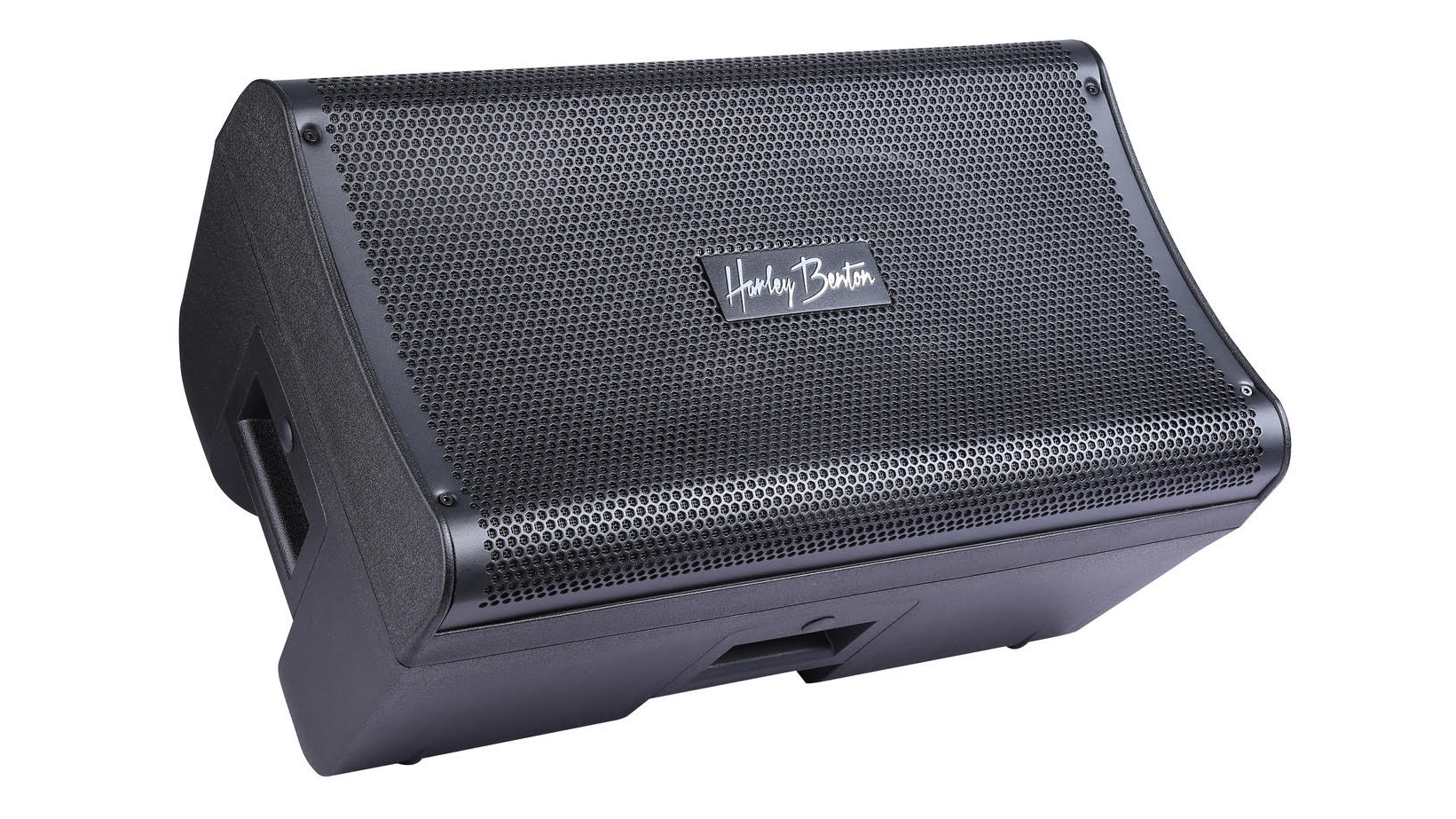
Performance and Verdict
Something we appreciate from many of the FRFR cabs, and indeed acoustic combos we’ve seen recently has been the wedge design. The idea of angling up a speaker for a guitarist makes sense, whether it’s behind the player or being used as a monitor in front it doesn’t seem to make sense to have your guitar sound hitting your legs.
It’s long puzzled us why standard guitar combos don’t tend to allow for this - you often need to buy an amp stand to simulate it.
With the ability to angle the cab towards your ears more you’ll be surprised on the difference it makes to how much stage volume you need and deafening levels are no good for anyone. In the case of Line 6 Powercab it’s foldable feet that the cab can lean back on. It's good news here too. We’re pleased to see this speaker does tilt.
With the ability to angle the cab towards your ears more you’ll be surprised on the difference it makes to how much stage volume you need
It can be titled to around 25 degrees thanks to the moulded shelf at the back. The speaker can be used flat horizontally or vertically too, with handles three handles positioned around the chassis to allow for this. There's also a flange for mounting on a tripod.
The back display screen is designed for vertical use but really, as we’ll explain, operating its menus is a straightforward enough operation and should be a case of set and forget.
Its heavy-duty moulded plastic seems built for the wear of the practice room and gig circuit – even the concave front grill feels robust. Indeed it feels more road-ready than some more expensive vinyl-covered FRFR cabs we’ve encountered.
The Harley Benton FRFR-112A’s 14.6kg weight is also less that the Line 6 Powercab 112’s 15.5kg and the HeadRush FRFR-112’s (yes the name is similar!) 16.2kg too.
Plugging in is straightforward; power on at the rear and then work through the LED menu using the master volume control to scroll and push-in action to select options. From here you can select one of three guitar cab sims or choose to have none and go with a cab simulation from your modelling unit.
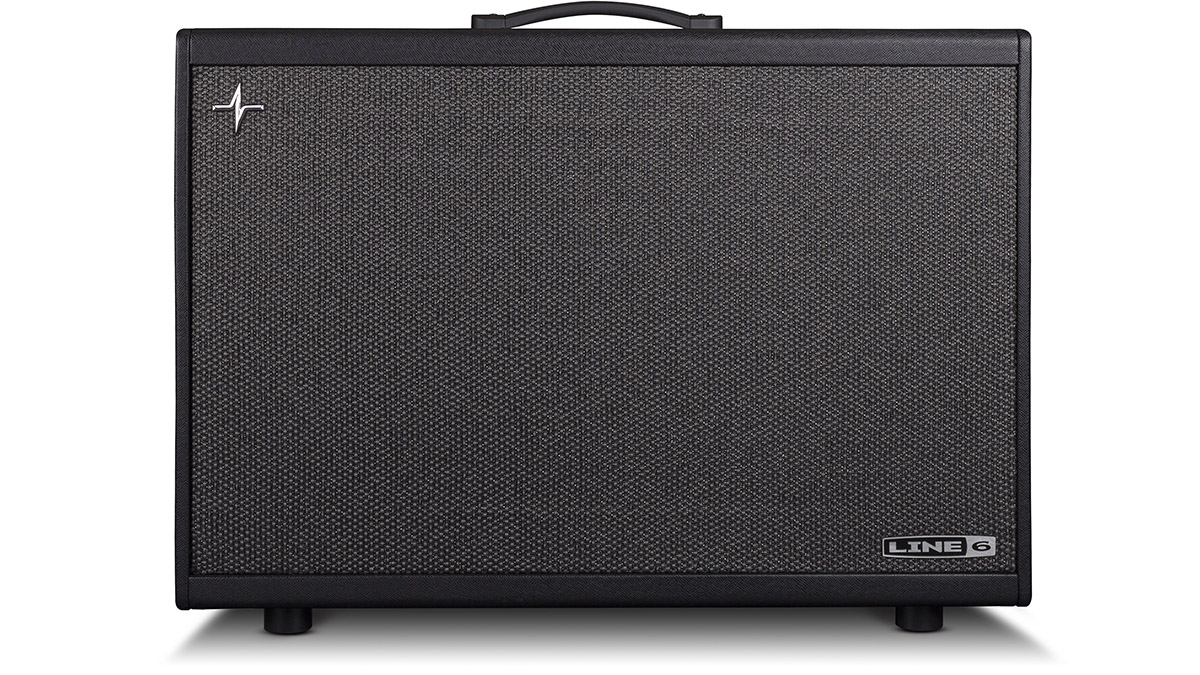
• Line 6 Powercab 212 Plus
Line 6 calls its approach 'speaker modelling' with six digital recreations of classic loudspeakers, but 128 Impulse Response- enabled presets too.
• HeadRush FRFR-112
A huge 2,000 watts at peak or around 1,000 watts continuous from the power amp here. But no cab sims.
There’s two inputs with gain controls for each but it’s worth noting that any onboard cab sim you select will apply to both. There’s three preset EQ settings too; two for guitar and a PA preset. You can also edit the LED brightness and contrast to suit your surroundings.
So it’s simple to work through and the cab sims based on impulse responses from ‘real’ cabs are described as modern and vintage voiced. With three to choose from, you're not going to find the kind of versatility and range found on the detailed speaker models from Line 6’s Powercab 112 Plus. But that’s over £500 more.
Nevertheless, all the sims sound impressive to us. There are obviously variables at play here depending on what you're bringing to the equation; what modelled sounds and pickup type you’re feeding in.
We found ourselves gravitating to Sim 1 both with a Helix and then a Victory VH4 valve preamp pedal. With superb clarity and punch, it provided an all-round superb platform for our tones that we could then deal in further from the guitar and our preamp unit parameters.
But for low-end heaviness, Sim 3 was hard to beat when we used higher gain models with humbuckers. Sim 2 fell somewhere in the middle. All provided a superb platform for tone with the option of bypassing and using IRs from your own unit as an alternative.
This thing is loud – more than we’d imagine anyone will possibly need with its maximum SPL of 134 DB. That’s better than not enough, right? But we’re a little surprised Harley Benton hasn’t entered the market with something a little smaller - say 250-watts.
The reason for that is this looks like a guitar cab model-loaded version of sister Thomann in-house brand The Box’s Pro DSP 112 . Fair enough, but with Harley Benton’s tendency to monitor online feedback we wonder what the future holds – it would seem logical to expand on this winning formula.
After you’ve invested in a modelling unit, the need to spend out further can be off-putting. But showcasing the power of your tones is vital if you want to play with other musicians or just be inspired at home away from headphones. The FRFR 112-A allows you to do just that.
It’s also versatile. With the sim functionality off and PA EQ engaged, we ran our electro acoustic through it using a Fishman preamp pedal to control the guitar EQ. The possibilities are wide open if you’re a function musician who might need that flexibility for different applications.
MusicRadar verdict: The performance, usability and build quality here are extremely difficult to fault at this price point. In fact, we can’t. The FRFR 112-A is loud, proud and a great value investment.
Hands-on demos
Harley Benton
Joel Ortiz
Specifications
- ORIGIN: China
- TYPE: Full-range flat-response active cabinet with digital signal processing
- OUPUT: 1200 watt Class D amplifier, maximum sound pressure level: 134 dB
- SPEAKER: Custom voiced 12" woofer and 1" tweeter
- DIMENSIONS: (W x H x D) 348 x 607 x 355 mm
- WEIGHT (kg/lb): 14.6/32
- CHASSIS: Solid plastic with three handles (can also be mounted with tripod flange)
- CONTROLS: Master volume, gain level for input 1 and 2, 3 DSP equaliser modes - each with ± 12 dB level control per band: 3-band EQ PA, 3-band EQ guitar and 5-band EQ guitar, display contrast and brightness
- INPUTS: 2 x XLR / 6.3 mm jack combo sockets (balanced), 3.5mm AUX input 3.5 mm jack socket for connecting line devices
- OUTPUT: 1x XLR (balanced)
- ADDITIONAL FEATURES: 3 speaker simulations, switchable low pass filter,
- CONTACT: Harley Benton
MusicRadar is the number one website for music-makers of all kinds, be they guitarists, drummers, keyboard players, DJs or producers...
- GEAR: We help musicians find the best gear with top-ranking gear round-ups and high-quality, authoritative reviews by a wide team of highly experienced experts.
- TIPS: We also provide tuition, from bite-sized tips to advanced work-outs and guidance from recognised musicians and stars.
- STARS: We talk to musicians and stars about their creative processes, and the nuts and bolts of their gear and technique. We give fans an insight into the craft of music-making that no other music website can.
With its latest free update, Ableton has finally turned Note into the app I always wanted it to be
Technically capable, but struggle to make your tunes sound musical? 5 simple music theory hacks to make your tracks stand out
"Despite its size, it delivers impressive audio quality and premium functions as well as featuring a good selection of inspired sounds": Roland GO:Piano 88PX review










